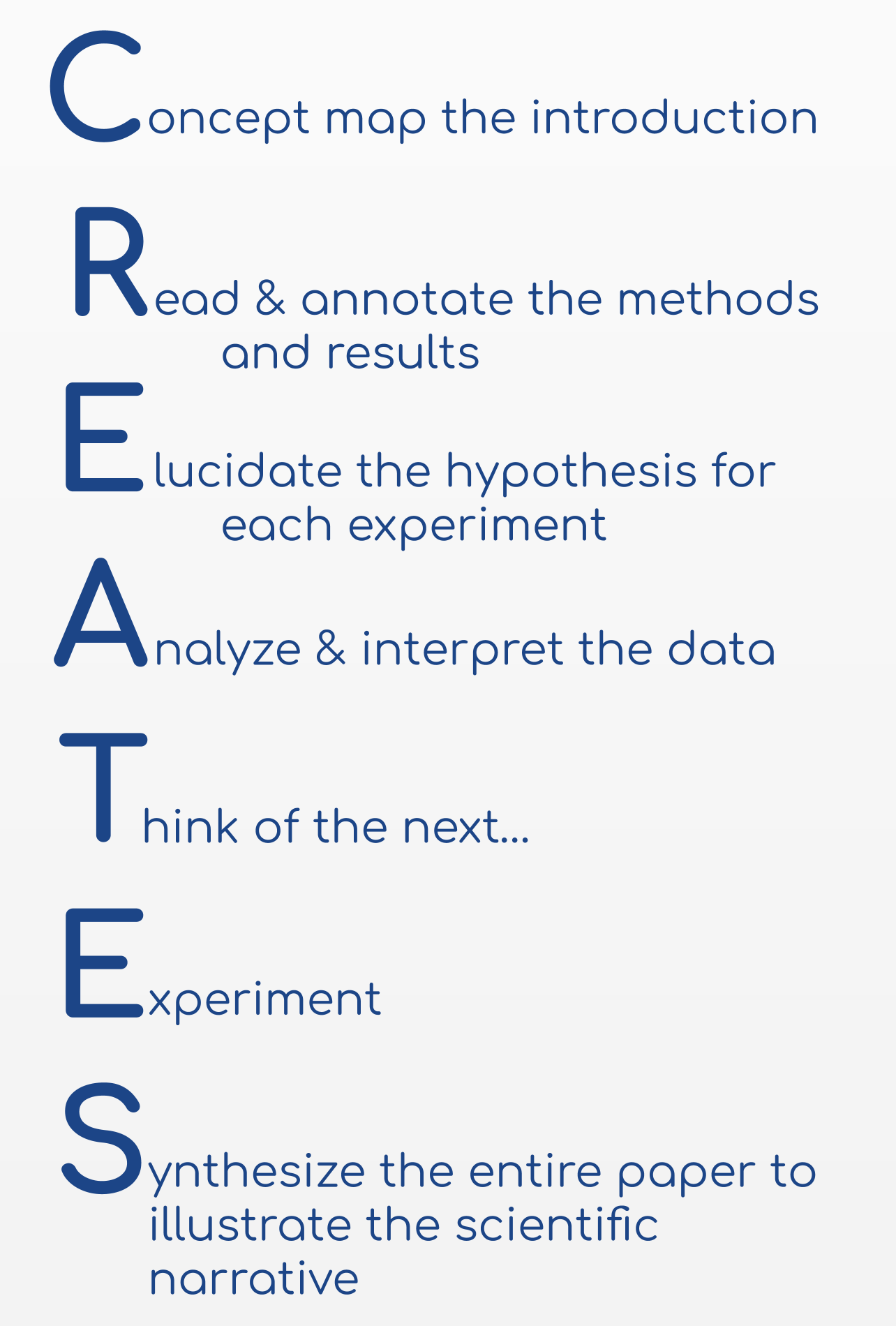C.R.E.A.T.E.S- Introduction
CREATES is a set of 6 steps to help you read, analyze, and fully understand the narrative of scientific papers!
The CREATES website guides you through all six steps of the CREATES process, providing helpful examples and tips from both teachers and students along the way. You'll find detailed annotations of authentic student work to help you get the most out of the CREATES process!
- CONCEPT MAP THE INTRODUCTION
- READ & ANNOTATE THE METHODS AND RESULTS
- ELUCIDATE THE HYPOTHESIS FOR EACH EXPERIMENT
- ANALYZE AND INTERPRET THE DATA
- THINK OF THE NEXT EXPERIMENT
- SYNTHESIZE THE ENTIRE PAPER TO ILLUSTRATE THE SCIENTIFIC NARRATIVE
C.R.E.A.T.E.S.- Instructions
The C.R.E.A.T.E.S. method is a set of 6 steps that help you read, analyze, and understand the narrative of scientific papers.

